HOW A CENSUS-TAKER SAVED OUR BLOCK (1900)
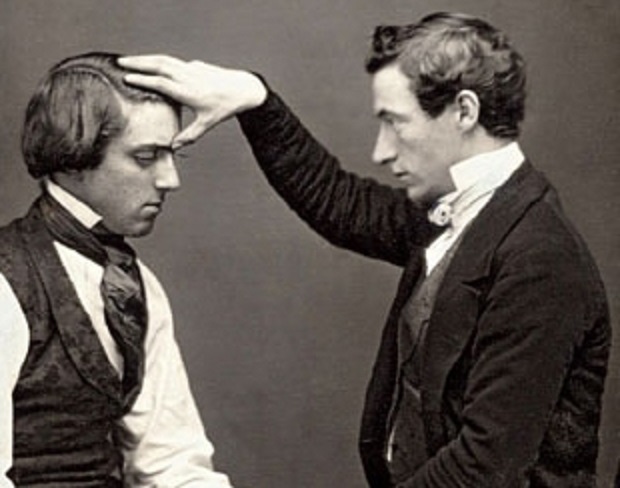
Brownstone Detectives investigates the history of our clients’ homes.
The story you are about to read was composed from research conducted in the course of one of those investigations.
Do you know the history of YOUR house?
********************************************************************************************************************************
I can tell you a little bit about every single family on my block.
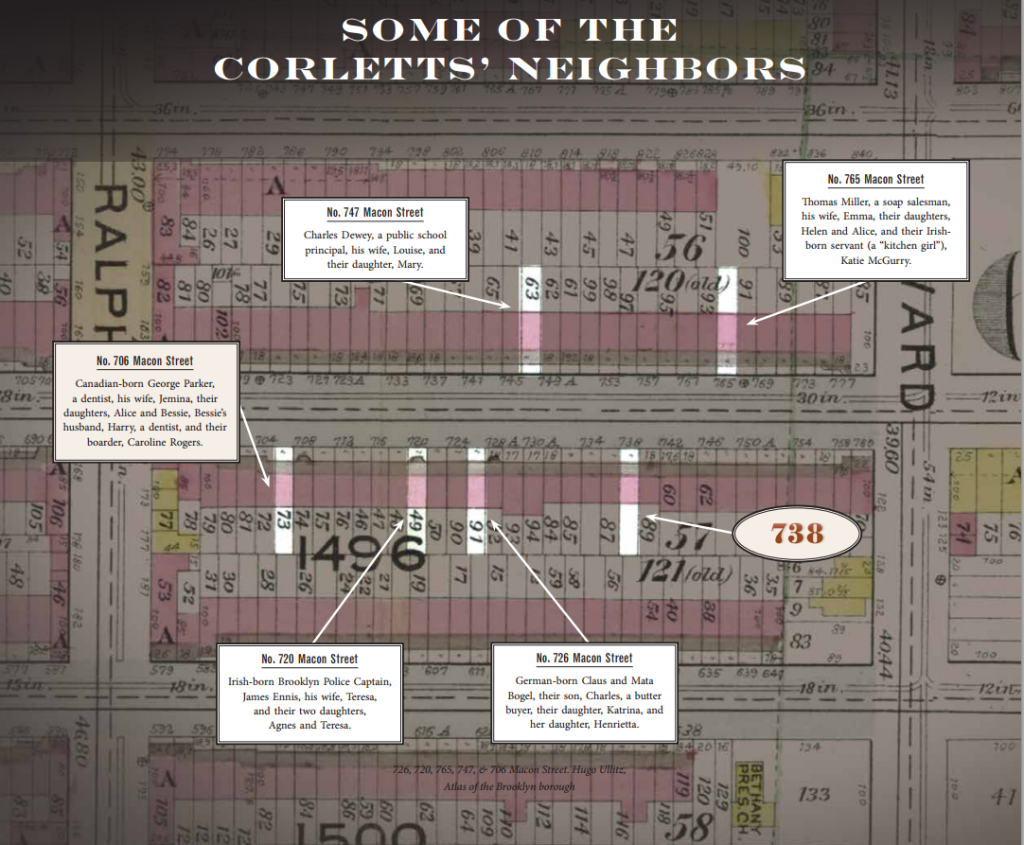 Well, not the present day families, of course – that might be a little creepy. Actually, it is a lot easier to extract such personal information about the families that lived on my block more than 100 years ago – in the year 1900.
Well, not the present day families, of course – that might be a little creepy. Actually, it is a lot easier to extract such personal information about the families that lived on my block more than 100 years ago – in the year 1900.
No, I am not a mesmerist or paranormal investigator. I don’t read cards or tea leaves. Nor do I make tables float or ask the spirit guides to knock in answer to my questions.
I happen to use a less fantastic, more pedestrian source for this type of information for my answers.
For, you see, I am a Brownstone Detective – and I use the 1900 Federal Census.
I’M FROM THE FEDERAL GOVERNMENT AND I’M HERE TO HELP.
The founders of our Federal government in the 18th century demanded that a decennial census be instituted. The demand was delineated within the U.S. Constitution, and the first attempt at listing Americans took place in 1790.
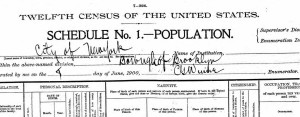
The State of New York decided, too, that knowing who lived within its political boundaries was important. And so the state also began taking its own census in 1825. It was a decennial census, as well, which, in order not to conflict with the Federal censuses, would take place in years ending with a “5.”
So, theoretically, nearly every house had had its residents counted from the time of its existence (so long as it existed after 1790), specifically from 1790 through to the present day, either by a temporary Federal employee or one from the State.

The census can tell you everything about the makeup of a family that you might wish to know – names, ages, how long people have been married, how many children a woman had (and how many of them lived), if they were citizens or naturalized (and when), what their occupations were, whether they owned their homes or rented them, where their parents were born, and if they read, wrote, or spoke English. (In certain years as the times changed you could find out certain other specific information about households, such as whether a family had a radio set, or whether it claimed a veteran of a world war.)
As you are able to locate the various state and federal censuses for a specific family through the years, a story of sorts can emerge as to the then-current family make-up, including who else, in the ensuing years, may have joined or left the family.
Which brings us to the Corlett family of 738 Macon Street in the year 1900.
THANK GOD FOR THOSE GOVERNMENT BEAN-COUNTERS
When the census taker came calling at 738 Macon Street on 8 June 1900, he asked a lot of questions.

His name was Charles G. Winne and he was a “decorator” who rented a house at 816 Hancock Street. He himself was a family man. He had been married at that point for 11 years and had two daughters of his own. He was of middling education. His penmanship was bright. And his spelling about average.
We can guess that he was either out of work at the time or that the decorating business in Brooklyn in 1900 was a bit slow.

Either way, in the summer of 1900 he had found temporary work taking the census for the Federal government.
And when he finished snooping at 738 Macon Street, he had left us with a colorful a snapshot of the Corlett family – along with the same level of detail for every other house on the block.
The census takers were usually very thorough and – if you are lucky – they took down all of their data in a readable type of rolling and stylishly cursive penmanship that was typical of the period. Winne’s, while not grand or flowery, was consistently solid – which is what any researcher would hope for.
HELLO, I AM MARY CORLETT. YOU MUST BE THE CENSUS TAKER.
On that summer day in 1900, after Winne mounted the steps at 738 Macon Street, he found the following therein:

A family of six, headed by Robert Corlett, a 47-year-old carpenter who had been married for 26 years to Mary J. She was 43 and had had three children, John (25), Eleanor (21), and Margaret (18) – all three of whom were still living. The Corletts, in addition to their own children, had also taken in Mary’s 7-year-old niece, Ethel Minor. Of the members of the family, other than Robert, only John was working – as a “chandileer” maker. Robert owned the house free of a mortgage. Everyone could read, write, and speak English.

This small piece of historical evidence was originally meant as a collection of demographic data on a certain family that would eventually be cobbled together with similar data from other homes in the neighborhood. This information would later provide the Federal government with a plethora of helpful aggregated statistics.
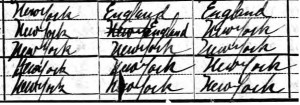
For us, though, it not only left us with a snapshot of the Corlett household at the turn of the last century, but, thanks to Charles G. Winne, it also provided us with a window into the lives of all of the Corletts’ neighbors.
MACON STREET BETWEEN RALPH AND HOWARD
As Winne walked the block, finding some residents home and others not, he began to put together the demographics of the 75 households thereon, giving us some peripheral information about the Corletts’ neighbors and friends. And within this data on these neighbors was a treasure-trove of information which added color to the story of the block.
And the Corletts had some very interesting neighbors – a few Civil War heroes, an installment collector who was murdered and dismembered, a female “personator” who had been enormously famous as a traveling minstrel, a woman related to Paul Revere, and a popular Brooklyn Police captain, along with many, many others.
Of the 64 households surveyed, there were a total of 333 residents. Twice as many people owned as rented, and everyone on the block was able to read, write and speak English. Approximately, every third family had a servant of some sort – the most popular being Irish “kitchen girls.” Roughly 17% were immigrants from primarily European countries. Ireland provided the highest number of these residents with 14. This nationality was followed by those from Canada (12), Germany (11), England (8), Sweden (7), and a smattering of other countries.
DIGGING DEEPER
When you find your house’s families – sitting squarely within the dividing lines of the censuses, you’ve struck gold. There’s not much more out there that gives an accurate picture – other than first hand accounts – of the residents of a certain house than a census.
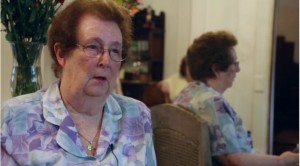
But it doesn’t have to end there.
With this information, like a detective following leads, you can use it to discover further clues that will build a picture of the family you are researching.
With their names and your house’s address you can discover archived newspaper stories, pictures, newspaper ads, the names of renters, architectural drawings, and vintage maps of your block.
If you are lucky, you may be able to locate the descendants of former residents of your home – or former residents themselves! – bringing you more stories, photographs, and even personal letters written from within your house.
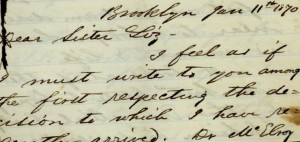 Building a sketch of your family can take time, but it is well worth the journey – and it can uncover a previously hidden colorful and, ultimately, valued portrait from the past.
Building a sketch of your family can take time, but it is well worth the journey – and it can uncover a previously hidden colorful and, ultimately, valued portrait from the past.
When we finished researching the Corletts – we had uncovered 25 pages worth of “portrait.”
POSTSCRIPT
The route to the portraits of your house’s families will have many twists and turns – count on it. Quite frankly, the path will lead you to into dead-ends more often than you’d like. But even then, finding your way out can become a fulfilling journey of discovery and accomplishment.
But there is always help.
If you ever get lost, or the trail goes cold, you can always call in a detective.
A Brownstone Detective, that is. 😉
———————————————————————————————————————–
 Brownstone Detectives is an historic property research agency. Our mission is to document and save the histories of our clients’ homes. From our research, we produce our celebrated House History Books and House History Reports. Contact us today to begin discovering the history of your home.
Brownstone Detectives is an historic property research agency. Our mission is to document and save the histories of our clients’ homes. From our research, we produce our celebrated House History Books and House History Reports. Contact us today to begin discovering the history of your home.